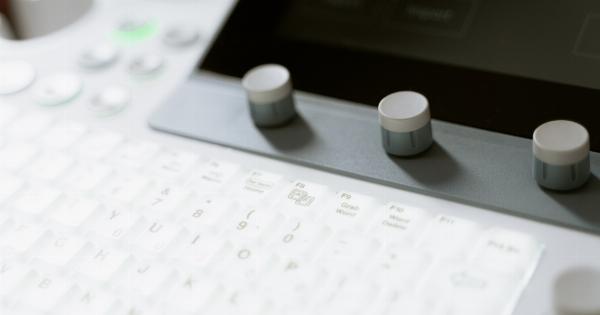Monitoring your heart rate is essential for assessing your cardiovascular health and determining your exercise intensity.
Your heart rate is an indicator of how well your heart is functioning and can provide valuable insights into your overall well-being. While professional medical devices offer accurate heart rate monitoring, there are several manual methods you can use to measure your heart rate.
In this article, we will discuss various ways to check your heart rate and provide useful tips to find your pulse.
1. Using Your Fingers to Find Your Pulse
One of the simplest methods to measure your heart rate is by using your fingers to feel for your pulse in specific locations on your body. The most common areas to find your pulse are your wrist, neck, and top of your foot.
To find your pulse using this technique:.
- First, relax and sit in a comfortable position.
- Locate the area where you want to measure your pulse (e.g., wrist, neck, or foot).
- Use the index and middle fingers of your other hand to gently apply pressure on the pulse point.
- Count the number of beats you feel within a 60-second timeframe.
2. Using a Heart Rate Monitor
A heart rate monitor is a wearable device that can provide accurate real-time heart rate measurements. It usually consists of a chest strap with electrodes and a wristwatch-style monitor that displays your heart rate.
The chest strap detects the electrical signals produced by your heart and transmits them to the wristwatch monitor. Heart rate monitors are commonly used by athletes and fitness enthusiasts to track their heart rate during workouts and ensure they stay within their desired target heart rate zones.
3. Utilizing Fitness Trackers with Heart Rate Sensors
Fitness trackers have become increasingly popular in recent years due to their ability to monitor various aspects of your health and fitness.
Many fitness trackers are equipped with heart rate sensors that use optical technology to measure your heart rate through your skin. These sensors emit light that penetrates the skin to detect blood volume changes and calculate your heart rate. To measure your heart rate using a fitness tracker:.
- Make sure your fitness tracker is securely fastened on your wrist.
- Activate the heart rate monitoring feature on your fitness tracker.
- Remain still for a few moments to allow the fitness tracker to gather accurate data.
- Check the heart rate reading displayed on the tracker’s screen.
4. Using smartphone apps
In this modern era, smartphones have become an integral part of our lives. Many mobile applications are specifically designed to measure heart rate using the phone’s camera and flash.
These apps utilize the same optical technology as fitness trackers to calculate your heart rate. To measure your heart rate using a smartphone app, follow these steps:.
- Download a heart rate monitoring app from a trusted source.
- Open the app and allow it to access your camera and flash.
- Place your finger gently on the camera lens, making sure it covers the lens and the flash.
- Remain still and wait for the app to display your heart rate measurement.
5. Heart Rate Measurement During Exercise
During exercise, your heart rate increases to supply oxygen-rich blood to your muscles. Monitoring your heart rate during physical activity can help you optimize your workout intensity and ensure you’re working within your target heart rate zone.
To measure your heart rate during exercise:.
- Wear a heart rate monitor or use the heart rate sensor on your fitness tracker.
- Start your exercise session and allow your heart rate to stabilize.
- Check your heart rate reading on the monitor or tracker’s display.
- Adjust the intensity of your workout based on your desired target heart rate range.
6. Resting Heart Rate Measurement
Measuring your resting heart rate (RHR) is a useful way to assess your cardiovascular fitness level and overall health. Your RHR is the number of times your heart beats per minute when you’re at complete rest.
A lower resting heart rate indicates greater cardiovascular fitness. To measure your resting heart rate:.
- Find a quiet and comfortable place to rest.
- Sit or lie down and relax for 5-10 minutes.
- Locate your pulse either on your wrist or neck.
- Using your fingers, count the number of beats you feel in 60 seconds.
7. The Importance of Accurate Heart Rate Measurement
Accurate heart rate measurement is crucial for understanding your overall health status and monitoring the effectiveness of your workouts. It allows you to:.
- Determine your exercise intensity: By knowing your heart rate, you can adjust your workout intensity to ensure you’re working within your desired heart rate zone.
- Assess your cardiovascular health: Consistently monitoring your heart rate can help identify any abnormal changes that may indicate underlying heart conditions or cardiovascular disease.
- Track your fitness progress: Measuring your heart rate over time can provide valuable data to track your fitness improvements and determine if you’re meeting your goals.
- Understand your recovery rate: Monitoring how long it takes for your heart rate to return to its resting state after exercise can indicate your cardiovascular fitness level and recovery efficiency.
8. Factors That Can Affect Heart Rate
Several factors can influence your heart rate, including:.
- Physical activity level: Exercise and physical exertion significantly increase your heart rate.
- Emotional and mental state: Stress, anxiety, and excitement can elevate your heart rate.
- Medications: Certain medications can either increase or decrease your heart rate.
- Body position: Your heart rate may vary when you’re standing, sitting, or lying down.
- Environmental factors: Extreme temperatures and altitude can affect your heart rate.
9. When to Consult a Healthcare Professional
While monitoring your heart rate is generally safe, there are instances where you should consult a healthcare professional:.
- If you consistently have a very high or low resting heart rate.
- If you experience palpitations, dizziness, or fainting during or after exercise.
- If you have a known heart condition, it is important to follow your doctor’s guidance on heart rate monitoring.
10. Conclusion
Measuring your heart rate is an important aspect of maintaining good cardiovascular health and tracking your fitness progress.
Whether you choose to use your fingers, a heart rate monitor, or a smartphone app, accurately monitoring your heart rate provides valuable insights into your overall well-being. Remember to establish your resting heart rate, understand your target heart rate zones, and consult a healthcare professional if you have any concerns about your heart health.





























